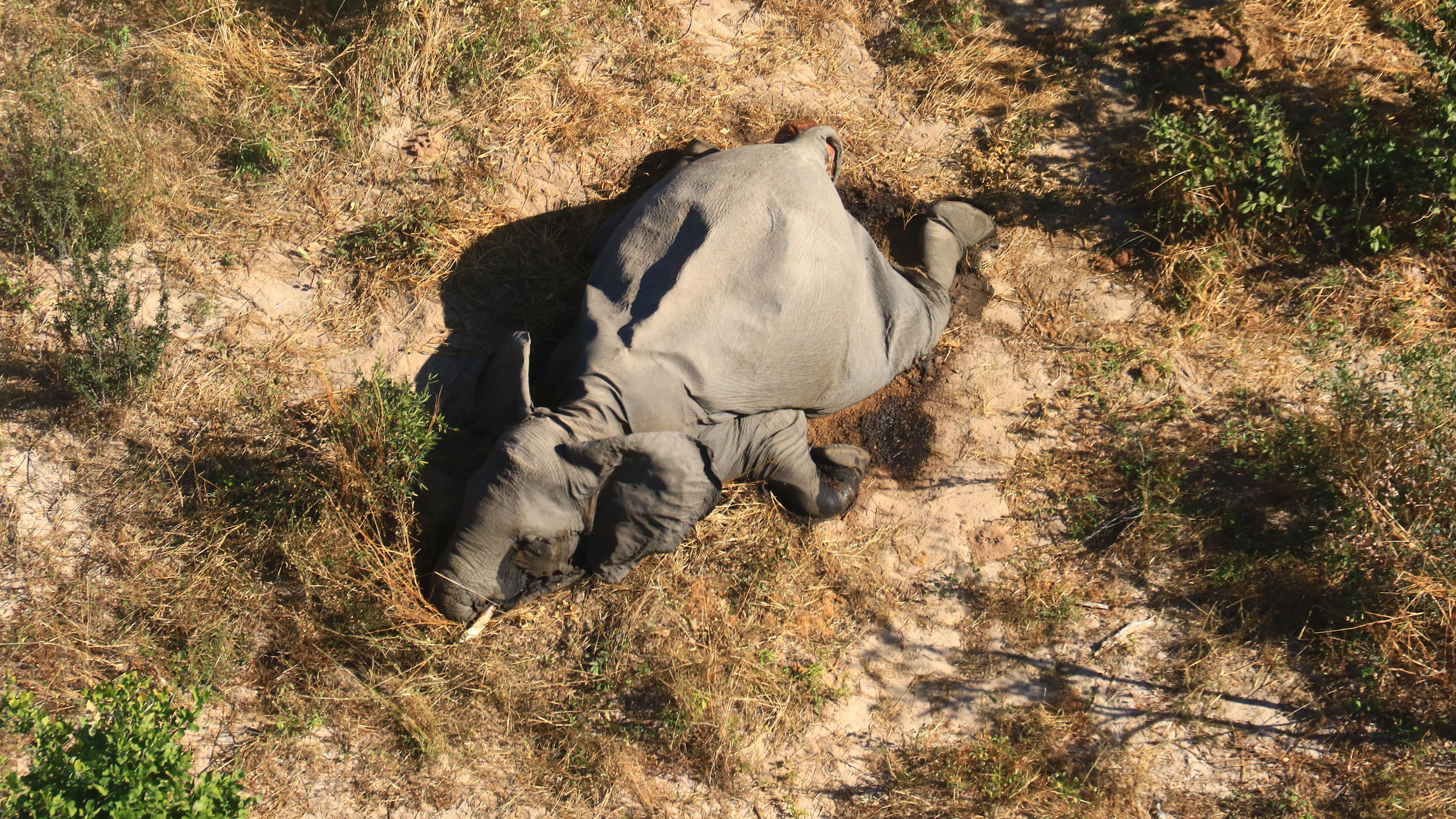350 elephants killed by 'a combination of neurotoxins' in water, Botswana government says
Seventy percent of the elephants dropped dead near watering holes tainted with toxic blue-green algae.

Scientists in Botswana may finally know why more than 350 elephants have mysteriously dropped dead in the country's Okavango Delta wetlands since May. The culprit — or one of them, anyway — appears to be neurotoxins spread by thriving colonies of bacteria living in the region's water holes.
"Our latest tests have detected cyanobacterial neurotoxins to be the cause of deaths," Mmadi Reuben, principal veterinary officer at the Botswana department of wildlife and national parks, said during a news conference Monday (Sept. 21). "However, we have many questions still to be answered, such as why the elephants only and why that area only."
More than 70% of the fallen elephants were found near water sources polluted with large amounts of cyanobacteria — a single-cell organism also known as blue-green algae, named for their tendency to clump together in large green mats or "blooms" on aquatic surfaces. These blooms can be hazardous or even deadly, harboring toxins that attack the nervous system, skin or liver of animals exposed to them. Toxic cyanobacteria blooms have previously caused the mass dieoffs of fish, birds and other animals, according to a 2008 study in the journal Global Change Biology.
Cyanobacteria use photosynthesis to make food from sunlight. This means they often thrive during summer heat waves when they can outcompete other types of algae, according to the 2008 study. As global climate change increases the frequency and severity of heat waves (2020 brought the hottest summer ever recorded in the Northern Hemisphere), algal blooms are becoming more widespread, and so have their toxins.
According to Reuben, the Botswana government's investigation revealed "a combination of neurotoxins" in the watering holes near the dead elephants. While no other species seem to have fallen victim to these toxins (save for one horse), it's possible that the elephants are particularly susceptible because they spend a lot of time bathing in the holes and drinking large quantities of water from them, Live Science previously reported.
Tissue samples taken from the affected elephants are still being analyzed by lab partners in the United States, U.K. and South Africa, Reuben added. Niall McCann, director of conservation at U.K.-based charity National Park Rescue, told The Guardian that officials should refrain from drawing any conclusions until those results are in.
"Just because cyanobacteria were found in the water, that does not prove that the elephants died from exposure to those toxins," McCann said. "Without good samples from dead elephants, all hypotheses are just that: hypotheses."
Sign up for the Live Science daily newsletter now
Get the world’s most fascinating discoveries delivered straight to your inbox.
One hypothesis that has already been ruled out: poaching. All 350 elephants were found with tusks intact, suggesting that ivory poachers were not responsible. That's reassuring, as Botswana supports a population of about 130,000 elephants, more than any other country in Africa, according to the African Wildlife Foundation. The delta where these carcasses were found is home to about 15,000 of those elephants.
Originally published on Live Science.

Brandon is the space/physics editor at Live Science. His writing has appeared in The Washington Post, Reader's Digest, CBS.com, the Richard Dawkins Foundation website and other outlets. He holds a bachelor's degree in creative writing from the University of Arizona, with minors in journalism and media arts. He enjoys writing most about space, geoscience and the mysteries of the universe.










